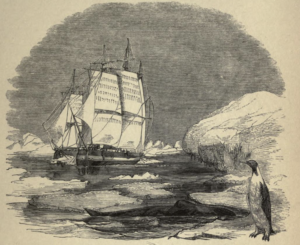Two boys, aged eleven and thirteen, are following in the footsteps of famous nineteenth-century polar explorer Captain James Clark Ross. On February 2, 1841, Capt. Ross with the elm-hulled ships HMS Erebus and HMS Terror discovered the Ross Sea, Victoria Land, and the volcanoes Mount Erebus and Mount Terror, which were named for the expedition’s vessels.

Twenty-first century boys Ollie and Harry Ferguson from Scotland, built three-foot-long replicas of the two ships from a 192-year-old elm tree, which was about 10-years-old when Ross sailed. The model ships are fitted with tracking and monitoring devices capable of sending scientific data back to the brothers. They expect their models to travel 12,500 miles in two years, attempting to circumnavigate Antarctica on circumpolar currents. Kudos to their aspirations!
Dr. Don spent about six months in 1966-68 (two Antarctic summers) at U.S. McMurdo station, conducting biological research on Ross Island and the coastal continent. In fact, his Ph.D. dissertation concerned the ecology of freshwater lakes at Cape Royds near the base of the volcano Mount Erebus. Small world.
Sources: World Magazine, August 12, 2023, p. 16; SciHi Blog, “James Clark Ross and the Ross Expedition,” February 2, 2023 (http://scihi.org/james-clark-ross-ross-expedition/, retrieved September 5, 2023).



